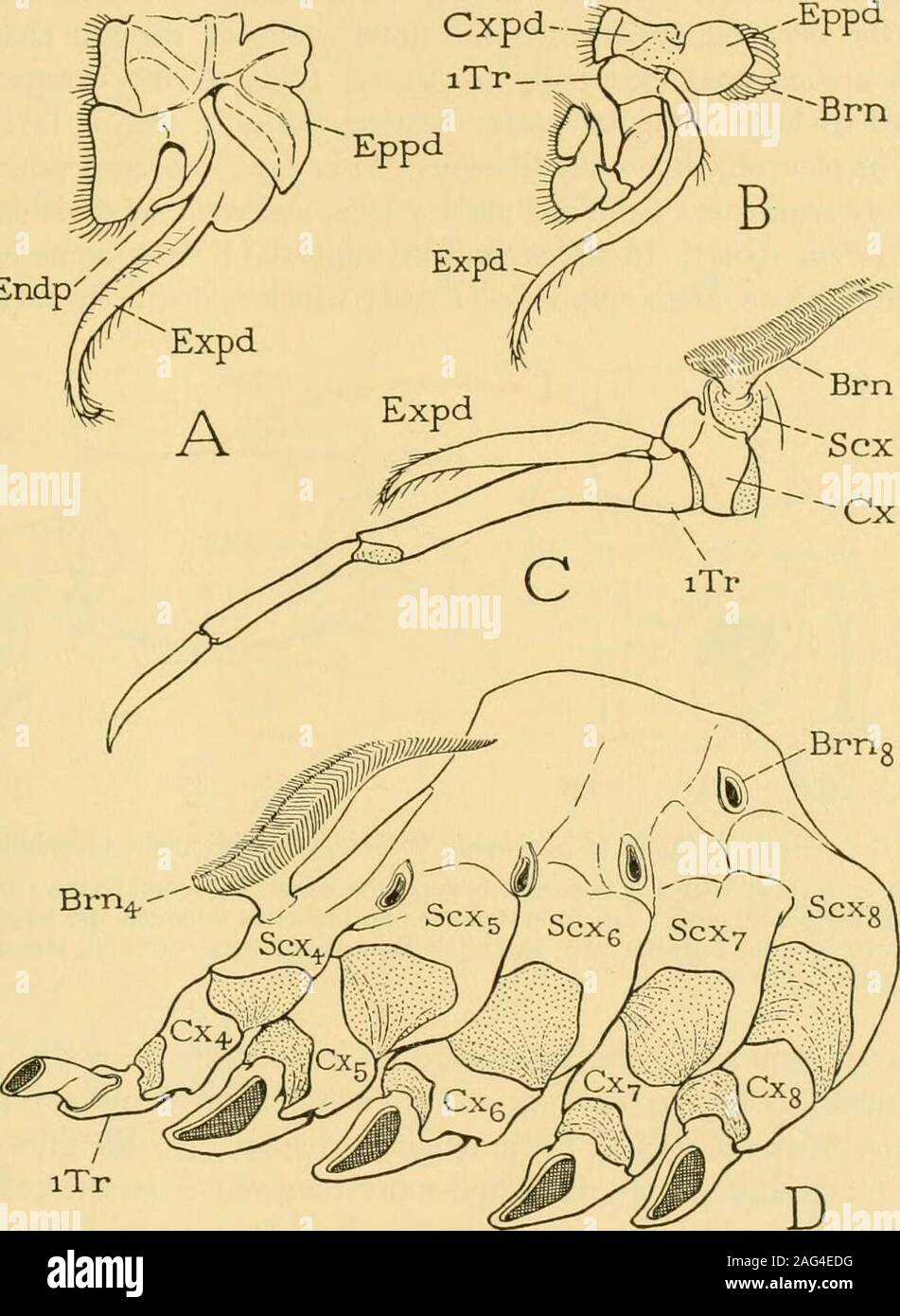. Smithsonian miscellaneous collections. rea partially or entirely sur-rounds the limb base. In this area there are sometimes developed truepleural sclerites, as in the chilopod family Geophilidae, where thereis a series of lateral plates of the body wall lying between the tergaand the leg bases (fig. 8 A, pi), or in the larvae of some insects wheresimilar plates occur on the sides of the abdomen. In many arthropods,however, there are plates in the definitive lateral walls of certain seg-ments that appear to have been derived from the bases of the appen-dages. While such sclerotizations are, t

Image details
Contributor:
The Reading Room / Alamy Stock PhotoImage ID:
2AG4EDGFile size:
7.1 MB (278.9 KB Compressed download)Releases:
Model - no | Property - noDo I need a release?Dimensions:
1352 x 1848 px | 22.9 x 31.3 cm | 9 x 12.3 inches | 150dpiMore information:
This image is a public domain image, which means either that copyright has expired in the image or the copyright holder has waived their copyright. Alamy charges you a fee for access to the high resolution copy of the image.
This image could have imperfections as it’s either historical or reportage.
. Smithsonian miscellaneous collections. rea partially or entirely sur-rounds the limb base. In this area there are sometimes developed truepleural sclerites, as in the chilopod family Geophilidae, where thereis a series of lateral plates of the body wall lying between the tergaand the leg bases (fig. 8 A, pi), or in the larvae of some insects wheresimilar plates occur on the sides of the abdomen. In many arthropods, however, there are plates in the definitive lateral walls of certain seg-ments that appear to have been derived from the bases of the appen-dages. While such sclerotizations are, therefore, not true pleural prod-ucts, they are generally termed pleurites, and those of each side of eachsegment constitute collectively the so-called pleuron of the segment. NO. 2 THORACIC MECHANISM OF A GRASSHOPPER SNODGRASS II It is claimed by Becker (1923, 1924) that the pleurites, the coxae, and the trochanters in the Chilopoda are formed, during the develop-ment of the individual, from numerous schlerotizations in the lateral Endp^. Fig. 7.—Maxillipcds and pleuron of a decapod crustacean, Macrobrachium jamaicensis. A, first maxilliped, left, posterior surface. B, second maxilliped, right, an-terior. C, third maxilliped, left, posterior. D, left pleuron, or inner wall of bran-chial chamber. Brn, branchia, gill; Cx, coxa; Cxpd, coxopodite; Endp, endopodite; Eppd, epipodite; Expd, exopodite; Sex, subcoxa; iTr, first trochanter. w^alls of the body segments, which unite to form the definitive legbases and the pleural sclerites of the adult. Though the apparentfacts in the development of the chilopods may be as Becker describesthem, it is difificult to see how they can be interpreted literally as repre- 12 SMITHSONIAN MISCELLANEOUS COLLECTIONS VOL. 82 senting the phylogenetic origin of the definitive pleural plates and theleg bases. It would seem more probable that they are ontogenetic phe-nomena only, and that Beckers observations really show simply thatthe pleurites and the b